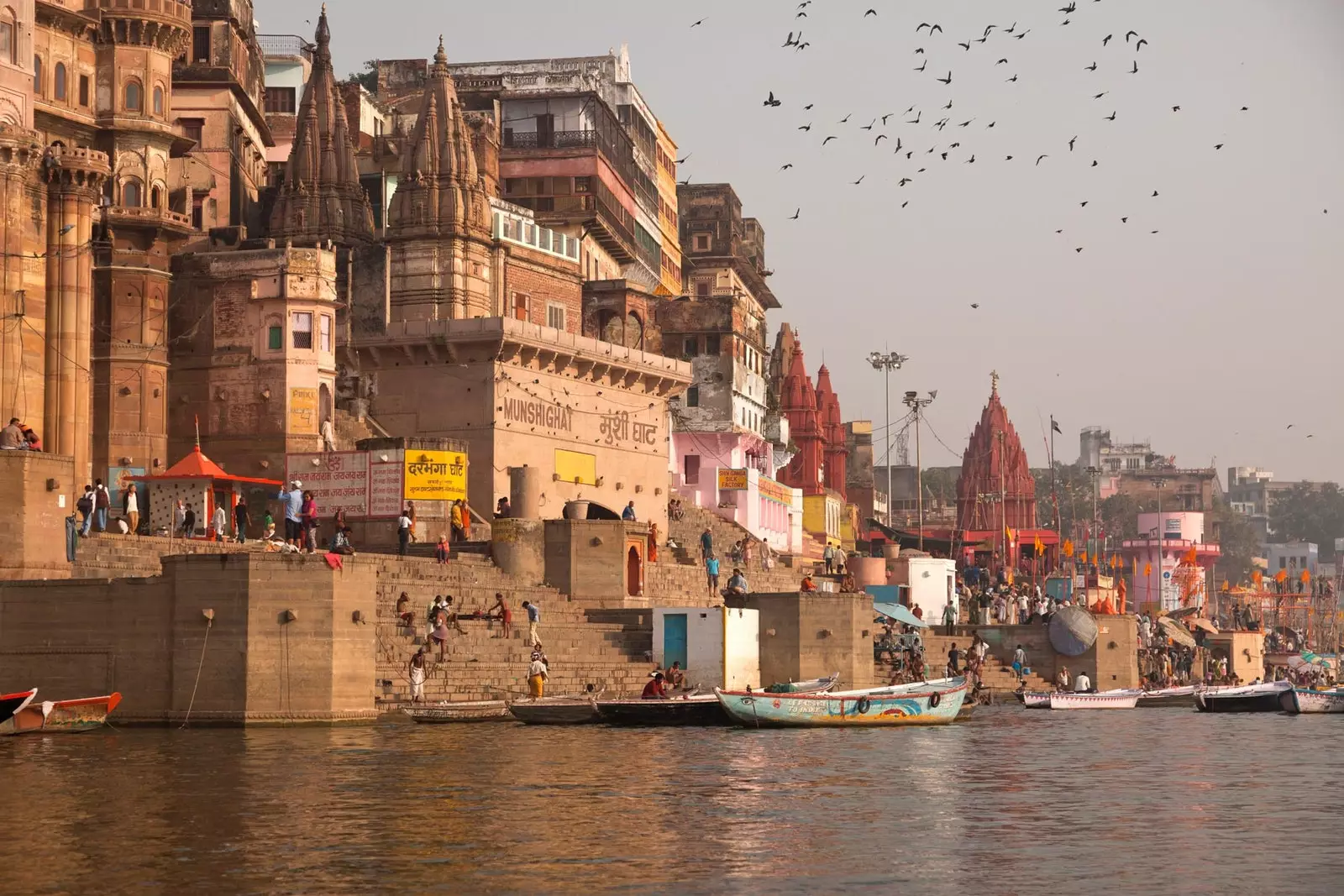
Varanasi, an embrace between life and death
All epithets are small for Benaras. The Holy City of the Ganges is overwhelming, fascinating, deadly, overwhelming, dazzling and sometimes incomprehensible.
The City of Light awaken all the senses while embracing life and death. We discover it in six acts.
1. A PLACE OF EXTREMES
Varanasi is a place of extremes, where the most opulent touches the most miserable. The favorite daughter of the Ganges, the capital of Shivaism, the oldest city on earth in which chaos already reigned when Rome or Jerusalem were not even urban planning.
The city where life and death meet, carrion, disease, but also fullness and holiness. Varanasi forms for the Hindus the culmination of a dream, the hope of life for the evicted, the reunion of the prodigal son with his mother.
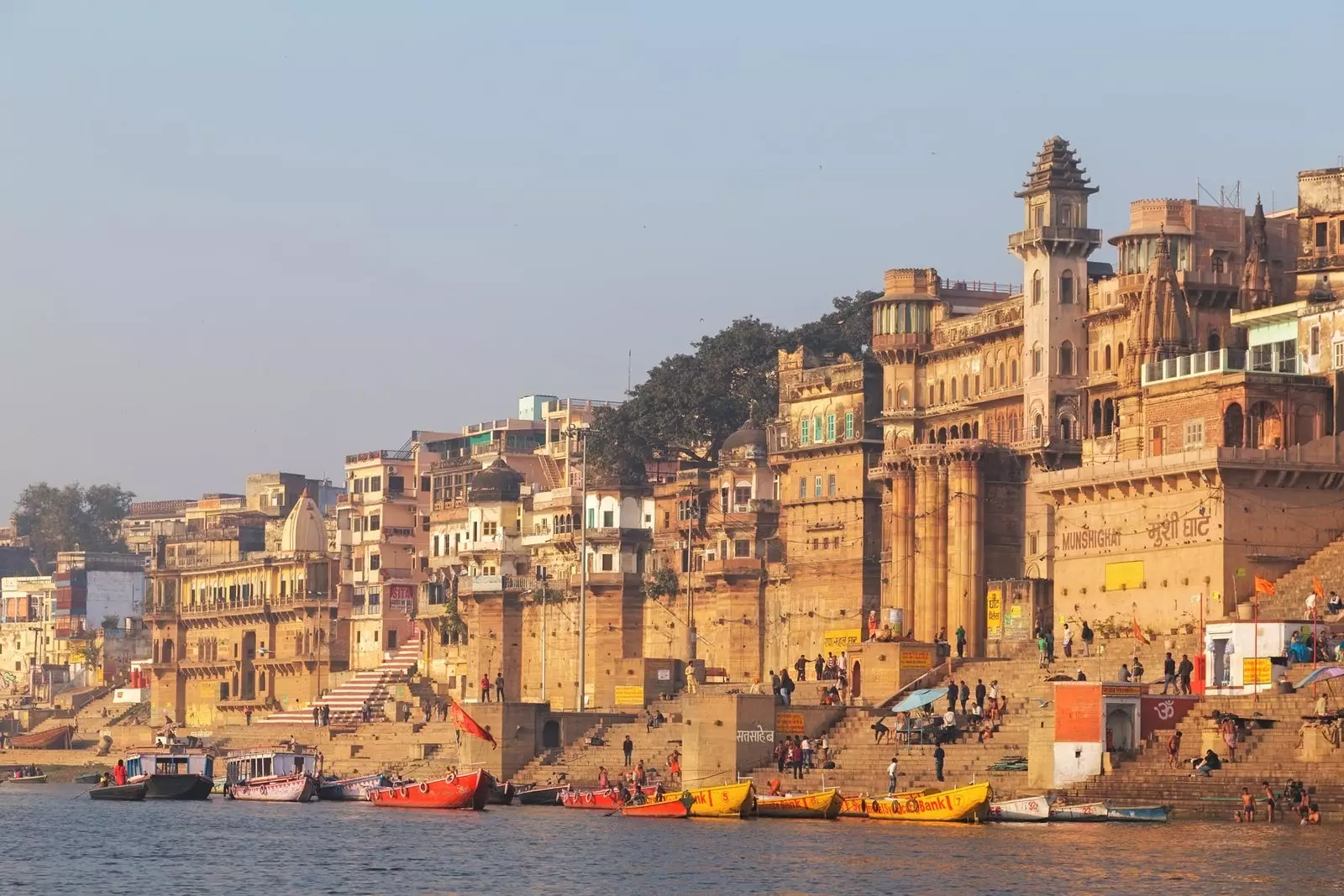
Varanasi, the Holy City of the Ganges
But for the visitor, Varanasi is a circus, an attraction in which monkeys and rats share a number with the crippled, the bonzes and the most infected of Hindu society.
It is a memorable city where the incomprehensible becomes magical, the smells stir your senses and the gaze does not know where to settle.
It is a stressful, fast, convulsive, frenetic place like the journey towards the gates of perception and, at the same time, a magical place. Of course, Varanasi does not accept the faint-hearted.
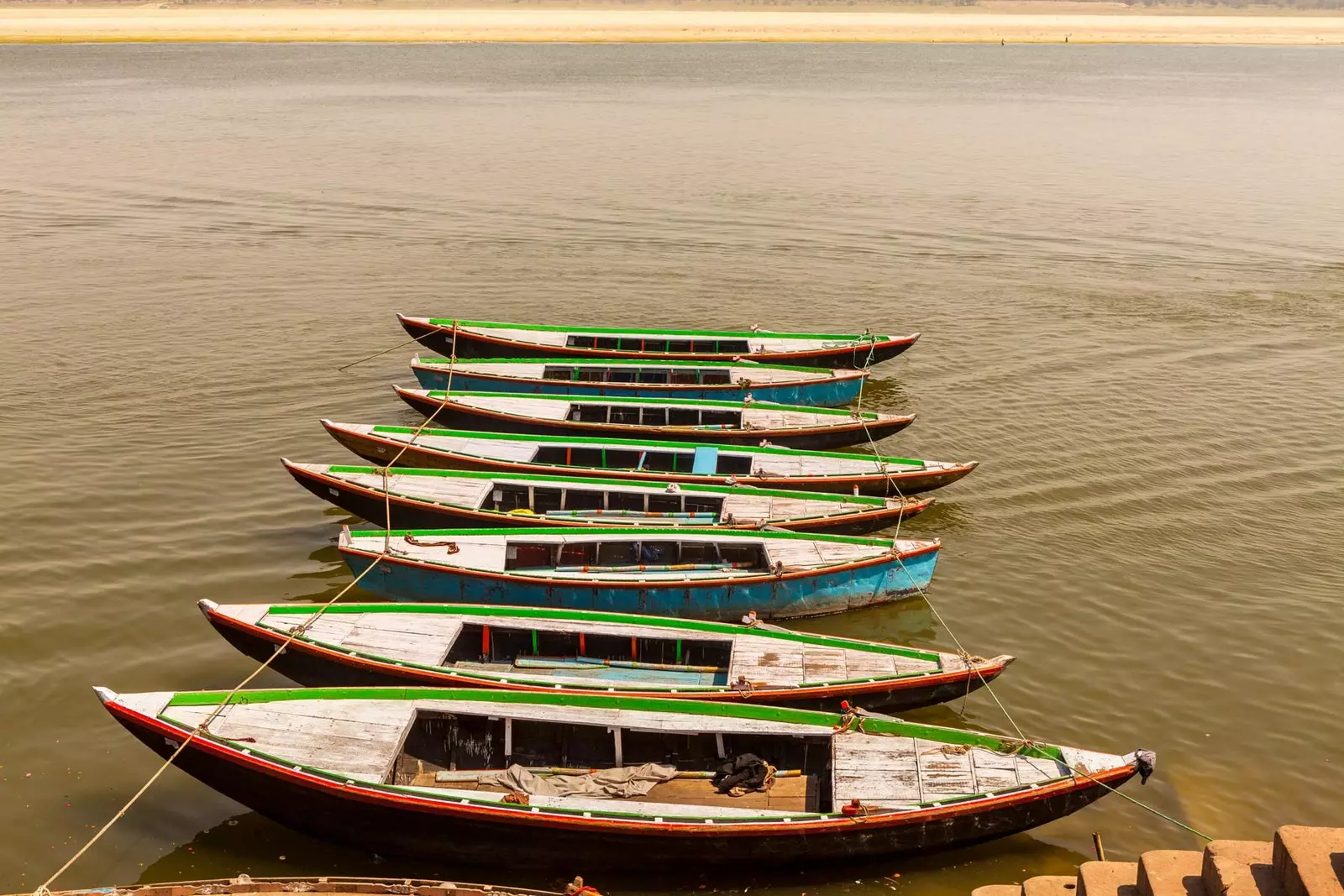
Wooden boats on the waters of the Ganges
two. THE GANGES
The steps that descend towards the Ganges enclose a whole world: lepers, outcasts, young girls, begging yogis, funny young men, Brahmins, women in flashy saris, old men on their last legs, snake charmers...
There are 90 ghats along the entire Ganges river on his way through Varanasi. Many to take a purifying bath and some to cremate the dead.
Crowded together, men and women of all walks of life undress and wash their clothes, meditate, sit with their legs crossed in an awkward position, shave, cut their nails, balance on their bodies to say a prayer, they throw candles surrounded by petals into the river, offer massages, sell flowers, offer blessings, play cricket...
The Ganges as current that carries life and death.
A boat ride at sunrise When the Hindus perform the puja (offering), with the golden lights bathing the city, it is the perfect way to tour the ghats before immersing yourself in them.
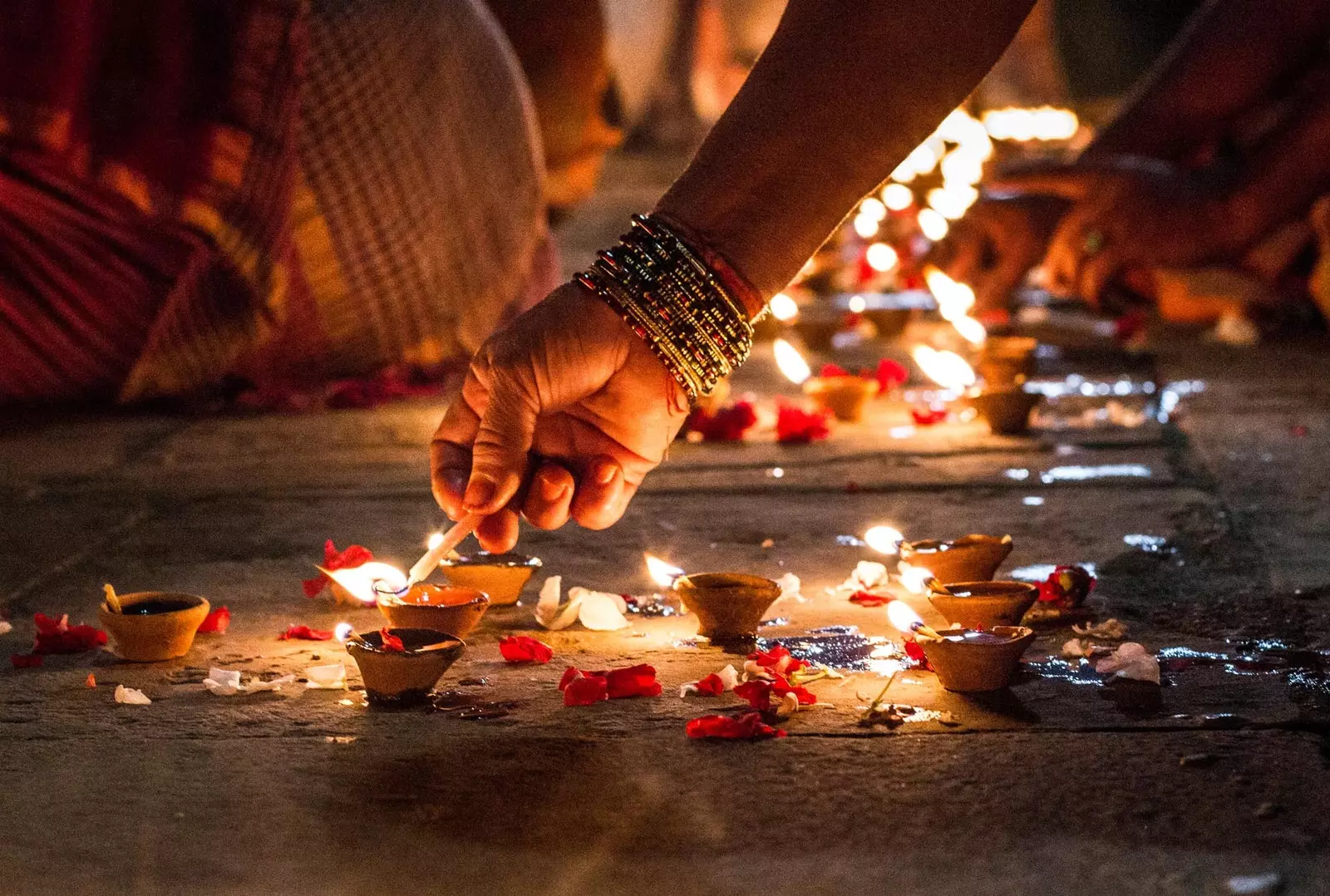
All epithets are small for Varanasi
3. THE ADORATION OF THE RIVER
Seven improvised temples arise at dusk on the stairs of the Dashashwamedh Ghat. Each of them, covered with a red rug, contains: candles, incense, flowers, glasses, fruits and a jug with water
Many other priests dressed in yellow-orange shirts and pants officiate the Aarti, a ceremonial worship of the river.
The darkness is greeted with lights, pounding chants, repetitive sonatas, dances, and deep faith. Travelers share barges with Hindus of rotten wood from which you can see the shore during the celebration.
In the prosaic field it is the best way to be safe for a while from silk shop touts, masseuses, florists and other hustlers that swarm the most visited ghat in Varanasi.
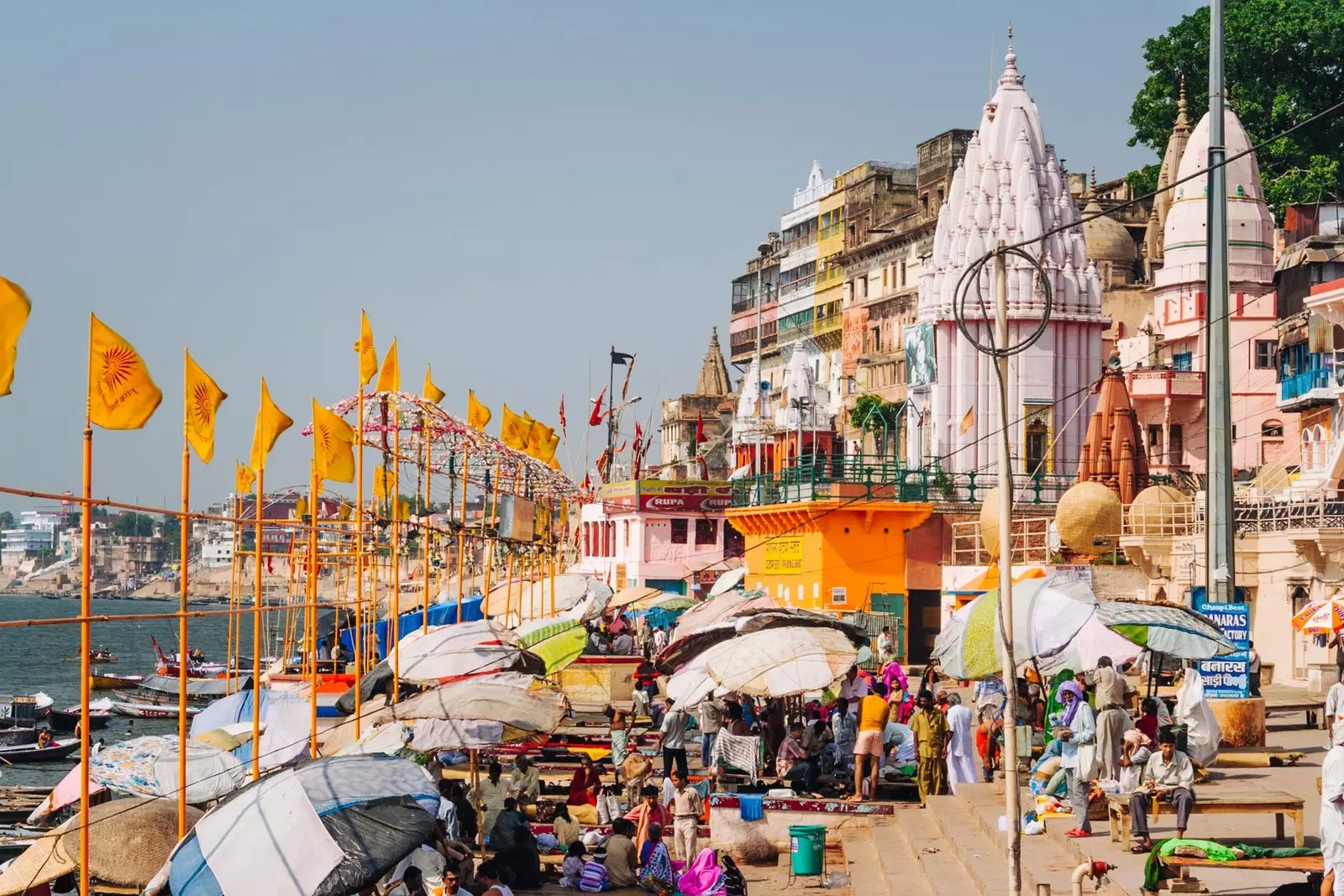
Dashashwamedh Ghat, where the Aarti is celebrated
Four. THE MEETING WITH THE MOKSHA
A few meters upstream, the death ceremony reaches its splendor . The stairs of the Manikarnika Ghat penetrate the waters of the Ganges like roots.
The image can be viewed but not photographed. Several pyres burn with human remains. Piles of firewood are clustered before the constant hustle and bustle of the doms, the caste of outcasts who are in charge of cremations.
It is a rotten but beautiful place. It is impossible to observe without feeling that one is before a sinister spectacle, a play with a script whose end is predictable and inevitable.
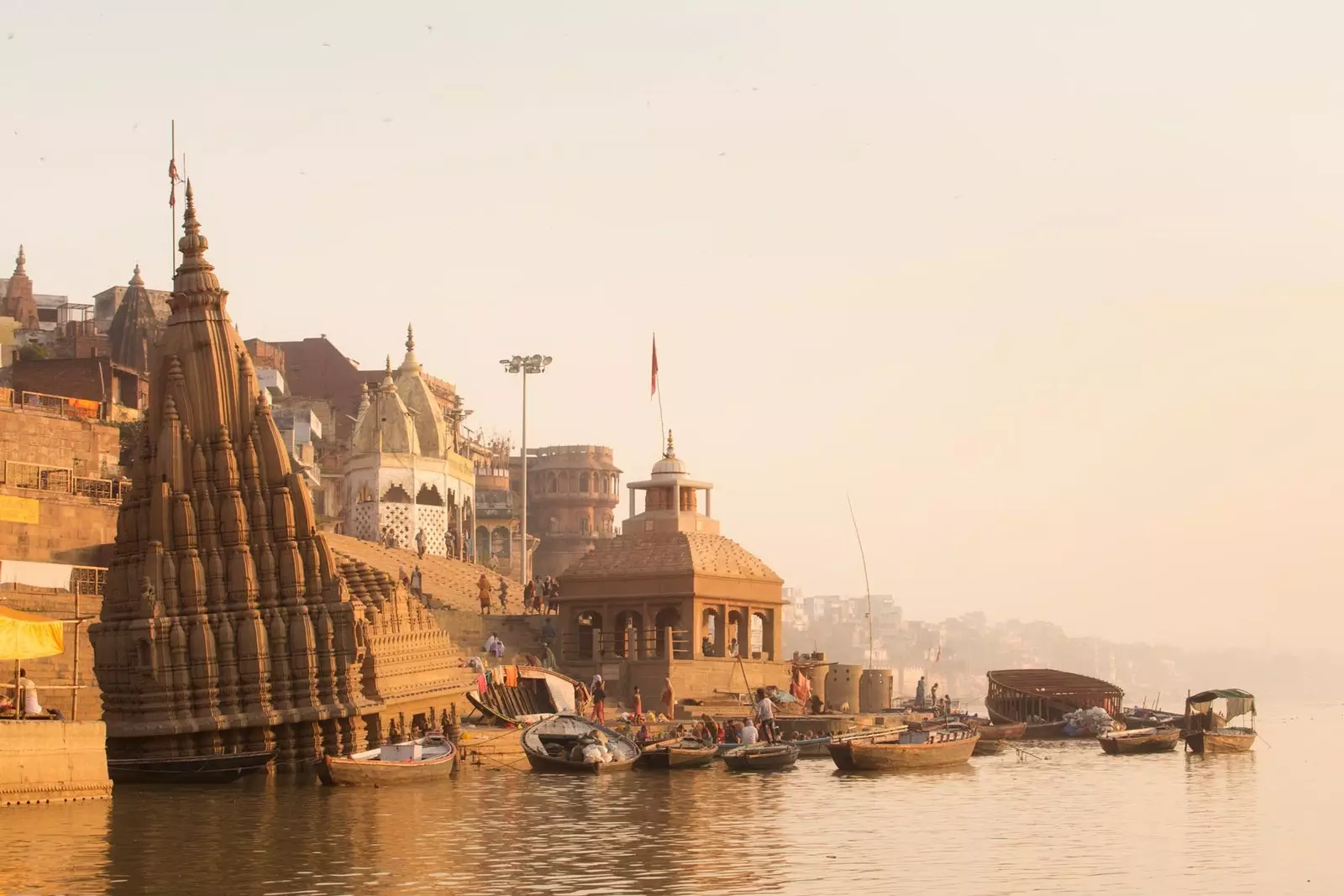
The Manikarnika Ghat, mute witness to the death ceremony
The remains will end up in the river, and the ash from the garlands and the charred cloak and the ribbons that wrap the corpse as if it were a gift to mother Ganga.
Cows and dogs pick up the remains of detritus that mix with colorful wild flowers whose yellow and red stand out against the gray of the stone, ash and wood.
The smell penetrates through the mouth and nose like a punch that leaves you injured. It is sweet, unmistakable. It is the incense of the death ceremony.
Because to die in Benares is to truly pass into another life, go out to meet the moksha, the absolute balance.
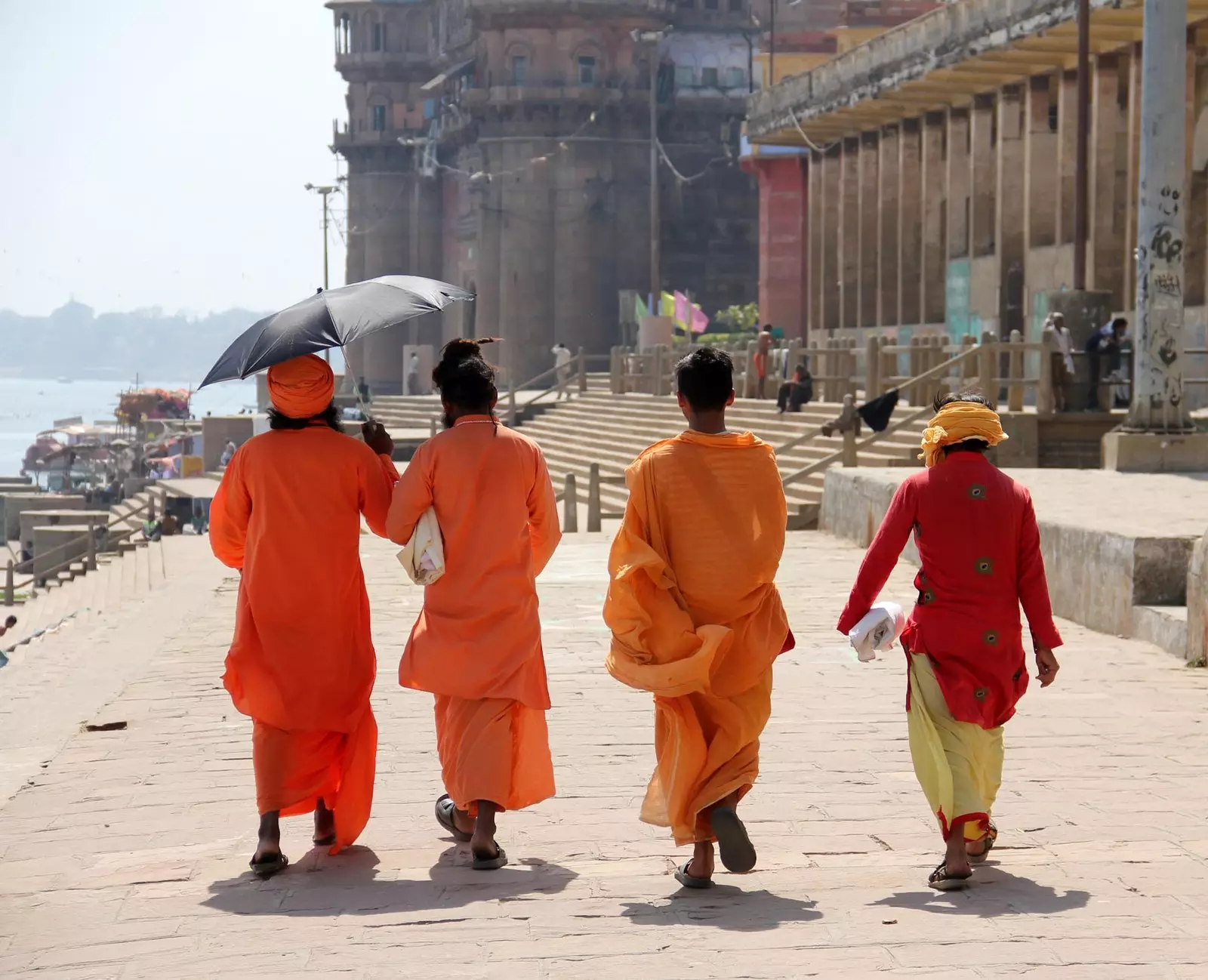
An ordinary day in Varanasi
5. THE VISHWANATH TEMPLE
Thousands of people crowded without any order in the very narrow streets of the old city. Unmistakable sign of the way to the Vishwanath Temple, the most revered stone shrine in Varanasi.
Hindus queue for hours and even days to get to touch the lingam (phallic symbol of Shiva). The area is heavily guarded and you can only enter with what you are wearing. Everything else is prohibited.
Built in 1776, its tower and dome are covered with 800 kilos of gold. Inside, the faithful push and fall on each other eager to make an offering that absolves them of their sins.
They shout in ecstasy as they throw their gifts into the pandit (priest) locked in a kind of silver altar. He places them around the lingam bathed in milk and carpeted with flowers.
It is, like everything in Varanasi, a scene that blends surreal fervor with boundless passion.
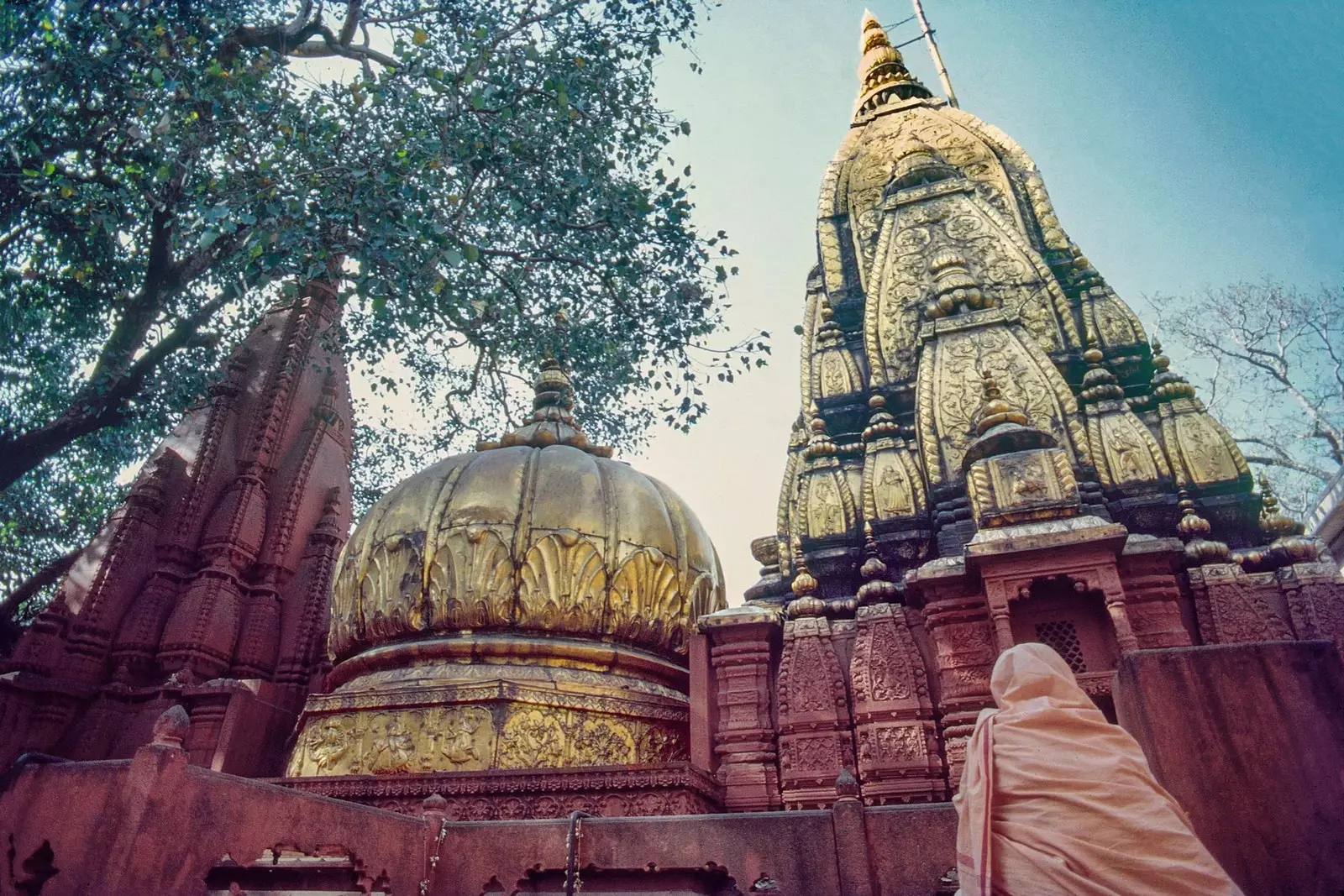
The Vishwanath Temple, the most revered stone shrine in Varanasi
6. SARNATH, HOME OF THE TURNING WHEEL
To achieve a haven of peace amidst all the hustle and bustle, madness, nonsense and chaos, you have to drive half an hour away from Varanasi by rickshaw. Sarnath is one of the top four pilgrimage destinations for Buddhists.
Here Buddha spoke in public for the first time. He delivered his first sermon, The Wheel That Turns, which contained his primary teachings.
Believers from all over the world are drawn here. There are some with saffron robes, typical of the Hindus; there are those who wear brown, typical of Thailand; red that suggest Tibetan origin; or dwellings that give away the monks of Myanmar.
They salute with reverence the great figure of Buddha that stands in the middle of a courtyard irrigated with water from the Ganges. They whisper songs and esimisman to connect with the spirits of the past. Varanasi is part of the cradle of Buddhism, a philosophy that in turn has emerged from Hinduism.
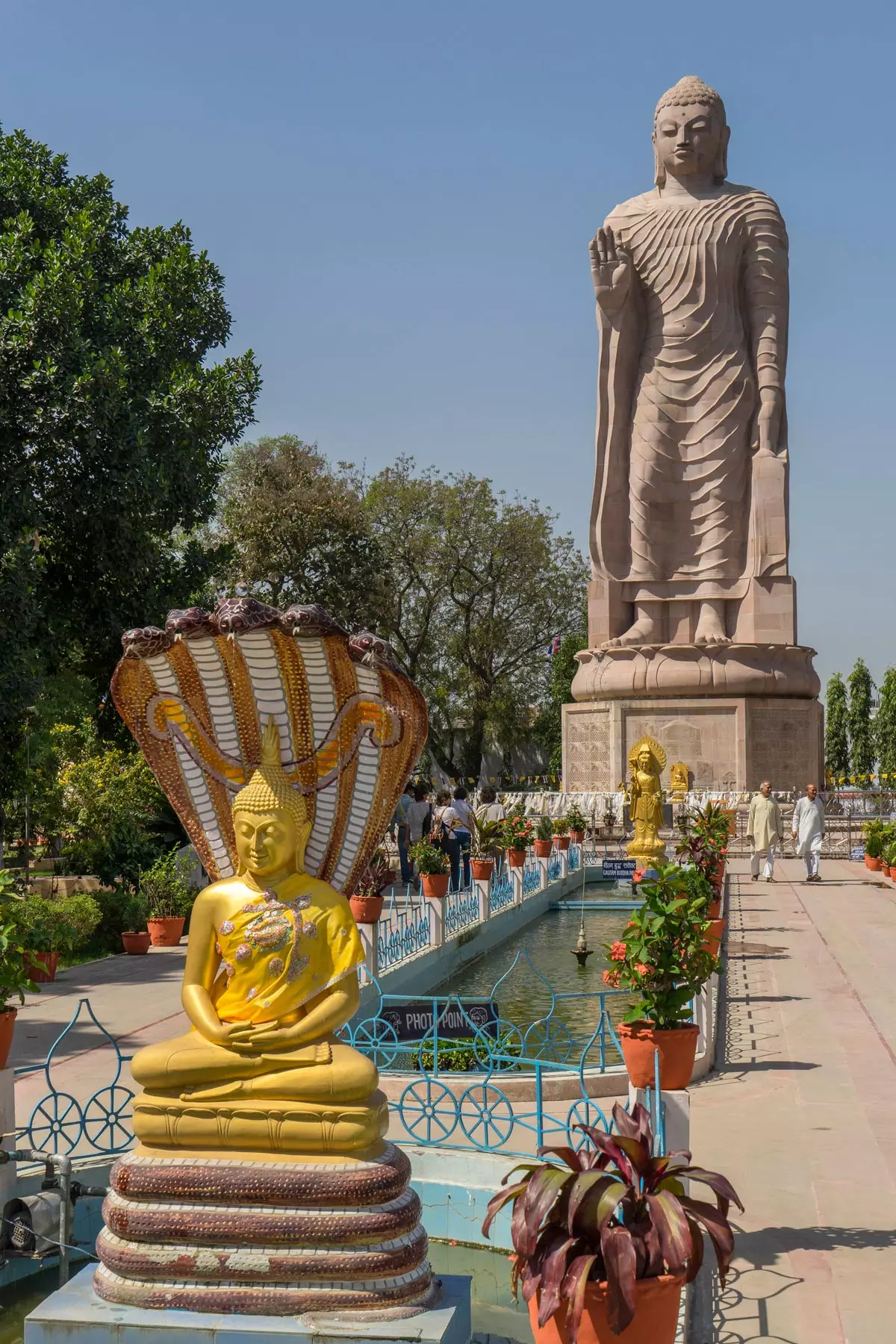
Sarnath, the place where Buddha gave his first sermon
*Follow the adventure of Viajes y Rock in Traveler.es. First stop: Delhi; second stop: Udaipur; third stop: Pushkar; fourth stop: Jaipur; fifth stop: Agra; sixth stop: Varanasi.
